Beautiful wax stars of flowers with a delicate aroma adorn long, curly shoots with fleshy green leaves. This is hoya; home care is easy. The article describes the secrets of growing and varieties of flower, especially watering for abundant flowering and other tricks that will help grow a beautiful, abundantly flowering plant.
Material Content:
Hoya: types and varieties
The stem length of this climbing plant can reach ten meters. Decorative hoya due to prolonged flowering. Young shoots stand out against the background of green foliage with a brown-violet color. Flowers are gathered in large umbrellas and smell good. In most species, oval leaves are rather large - up to 8 cm long and up to 5 cm wide. But there are also miniature plants, for example, Hoya Bella.
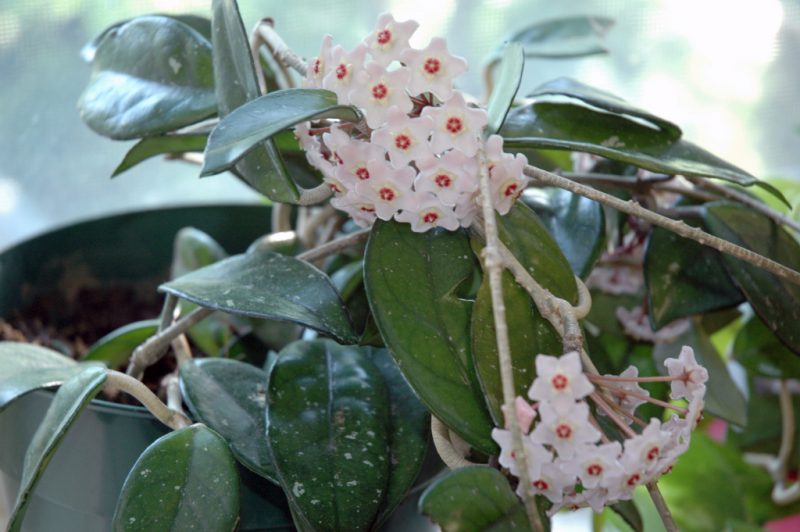
In nature, more than 50 species of this flower are found. Some are grown in greenhouses and homes.
The most famous types of hoya are:
- fleshy;
- beautiful;
- imperial;
- variegated;
- linear.
Fleshy hoya wax ivy - picky, curly succulent with dense leaves that blooms continuously from early spring to late autumn. This species has many varieties, among which there are plants with colorful leaves - green with a cream-colored border or with a yellowish middle.
Basic growing requirements
Hoya is a photophilous plant. When grown indoors, it blooms profusely only on the southern windows. However, on sunny, summer days, the plant must be shaded so that no burns remain on the leaves.
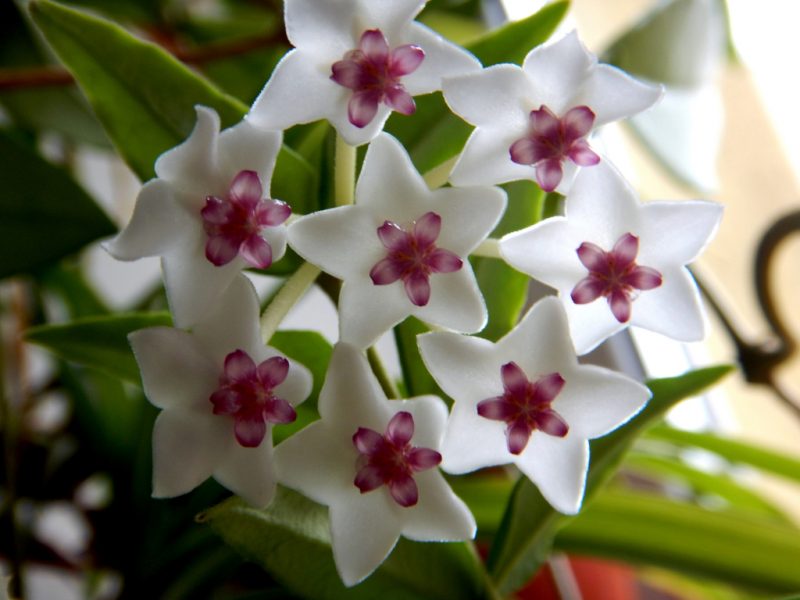
The more light there is for a hoya, the faster it will bloom.If buds have appeared, it must not be rearranged.
She does not like drafts, air temperature drops and strong cooling; at room temperature below + 10 ° C she can die.
- Hoya loves light, well-drained, fertile soil.
- For the normal growth of shoots and flowering, regular fertilizing with fertilizers is necessary.
- The soil in the pot should be moist, drying out before the next watering.
- A warm shower and regular spraying will benefit the hoya.
Special requirements include the selectivity of certain plant species to soil acidity and air temperature. There are hoyas that cannot grow normally if the room is less than + 20 ° C.
Home Care
When choosing a plant for a room, you must consider its size. Some hoyas grow quite large - these are real woody vines. Other species are compact and will not take up much space on the windowsill.
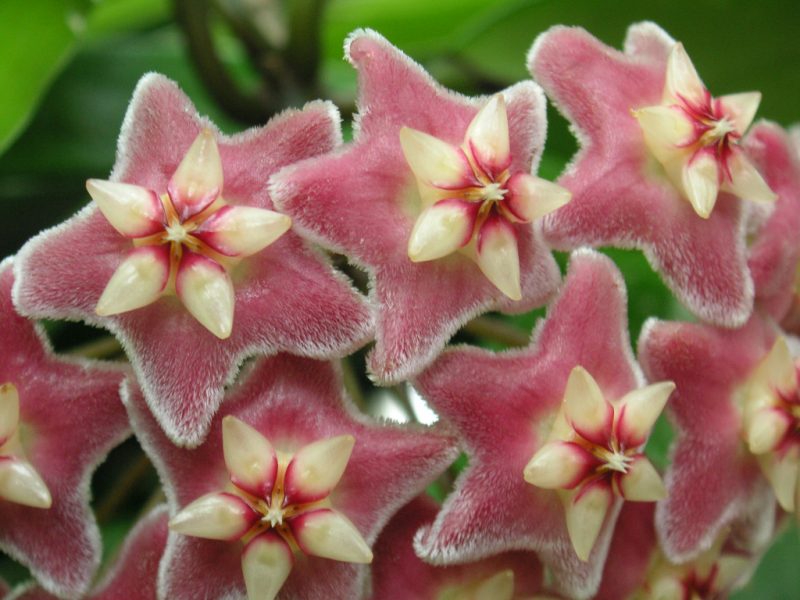
The plant can be grown as an ampoule, hanging the pot high, or establish a support, twisting the stem around it. The younger the plant, the more flexible the stems are, with the shoots lignified with age, and can break when garter to a support.
There are no particular problems in caring for the hoya. All efforts are paid off by beautiful flowering, which, with proper maintenance, can be quite long.
Features of the content depending on the season
Ivy can bloom in winter. If the gardener wants to enjoy such a sight, then the plant begins to be prepared in September. The pot is placed in a bright, cool place and reduce watering. It is best to place the flower on the eastern windowsill. In December and January, the flower is hardly watered - drought stimulates flowering. During this period, the room temperature should be around 15 ° C.
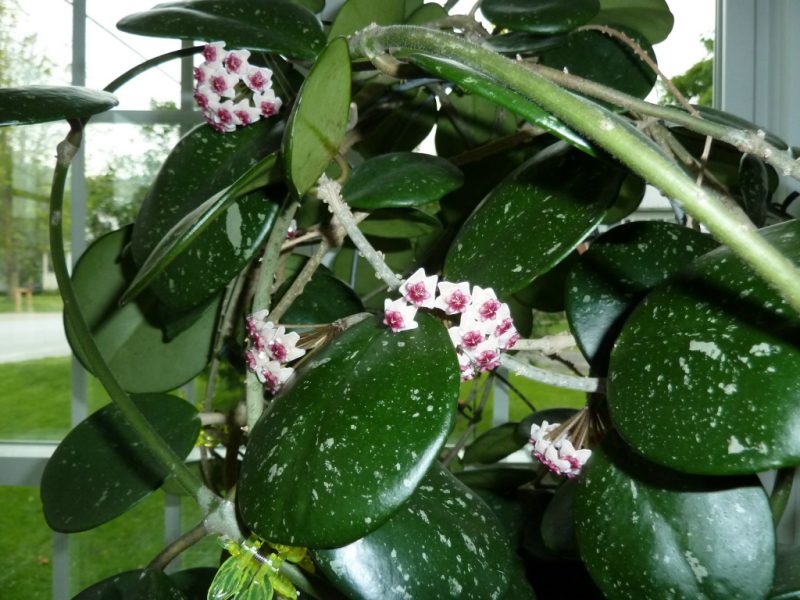
Some species do not like cool air, for example, multiflora hoya drops flowers and leaves when the temperature drops below +20 ° C.
Usually, the hoya uses winter as a rest time, and she benefits from reduced watering and lack of fertilizer. Most often, it blooms in spring and summer. During this period, the plant requires regular watering, spraying, fertilizing and good lighting.
Watering Hoya
In summer and spring during the intensive growth of the hoya, it is abundantly watered and sprayed. In autumn and winter, spraying is stopped, and watering is reduced. Water the plant as the earthen coma dries out with well-maintained, warm water.
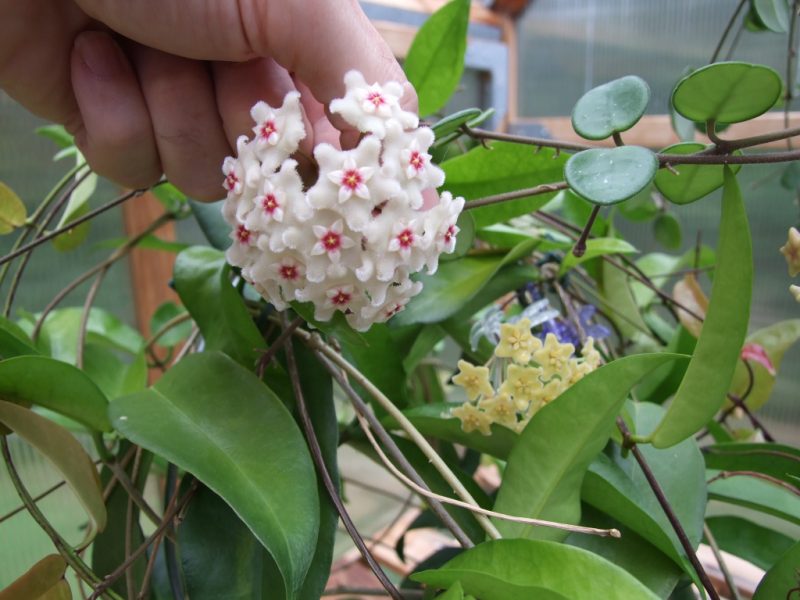
To stimulate flowering, watering in the summer is done by soaking in warm water for 1–2 hours. To do this, put the flower pot in a large plastic bucket. From the shower, pour the hoya from above with water at a temperature of about 30–35 ° C. When the water in the bucket reaches the top of the pot, barely covering the ground, close the tap. After 1 hour, the plant can be removed from the bucket, and put in its original place in the room.
Soil Composition and Pot Selection
Hoya does not like big flower pots. In small, on the contrary, it grows very quickly. In the natural habitat, this plant leads an epiphytic lifestyle, settles in the crown of large trees or on rocks, where there is very little nutrient medium. Therefore, when choosing a pot, you need to give preference to small containers, with good permeability of water and air to the soil.
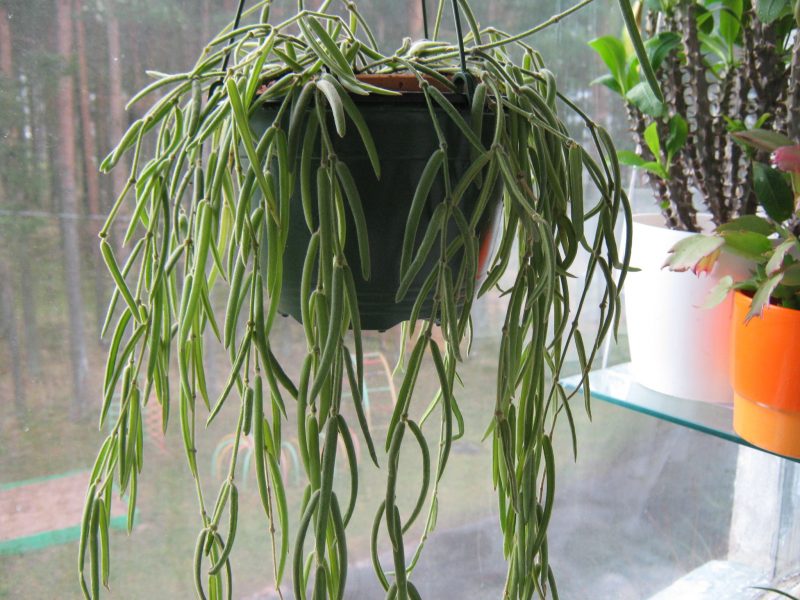
The material from which the pot is made does not really matter; plastic, clay or wood are suitable. The substrate for planting should be loose. A mixture of peat, perlite, coconut fiber and wood bark is prepared on their own. For nutrition, add a little leaf humus. Most species of hoya prefer neutral or slightly acidic soil. But there are varieties requiring an increased content of limestone, for example, H. curtsii, H. serpens.
Fertilizer application
The fertile substrate in which the plant is planted is already a good fertilizer. But after a year of cultivation, the hoya begins to lack the basic nutrients - nitrogen, phosphorus and potassium. This can be expressed externally by a slowdown in growth and a change in the appearance of the leaves.
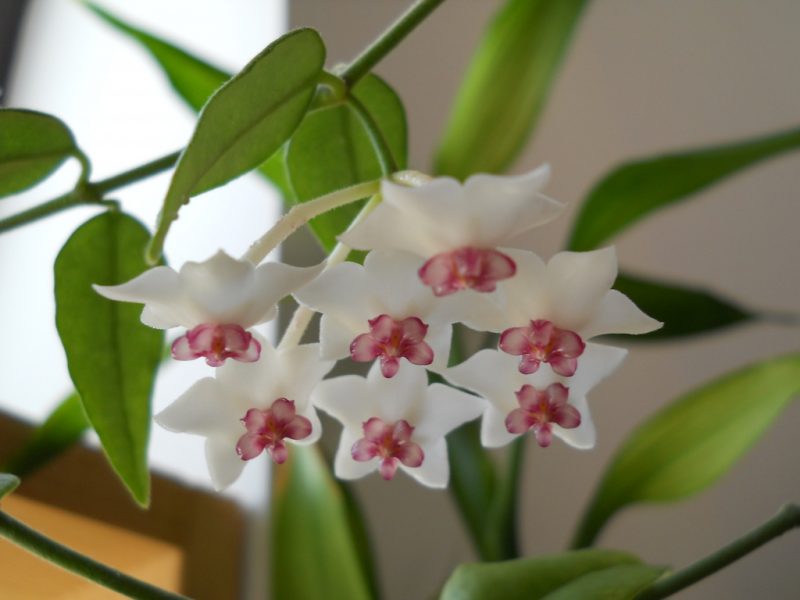
- With a lack of nitrogen, the leaves become pale green or yellow, and then fall off.
- Lack of phosphorus is expressed by redness of the veins of the leaf or its edges and peaks.
- With a potassium deficiency, the edges of the sheet plate dry out and curl.
In the warm season, the hoya is fed during watering once every two weeks with complex fertilizer for flowering indoor plants. The ratio of nitrogen, potassium and phosphorus in it should be the same. If signs of a lack of an element are noticed, you can find top dressing with its predominance.
Landing and transplanting
Hoya does not like frequent transplants. If necessary, you can make a transplant 1 time in 2 or 3 years.
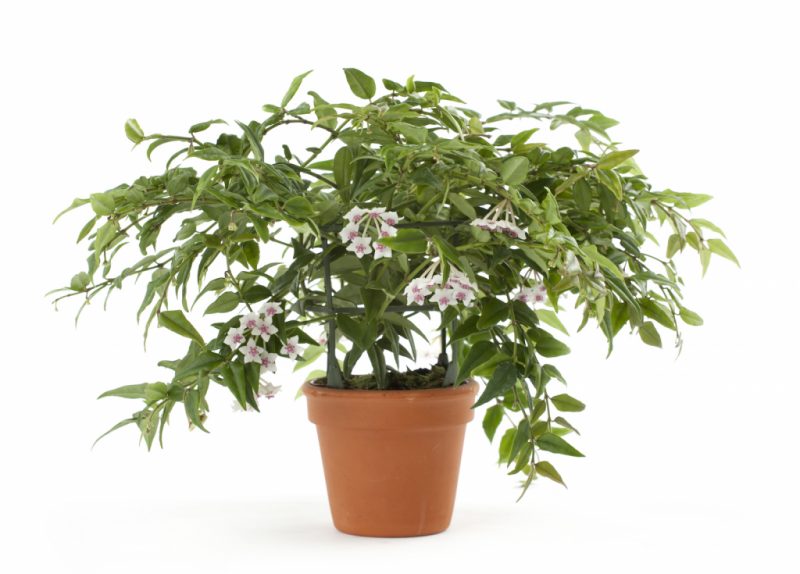
Since this plant easily forms aerial roots, it can be planted very simply. A long shoot of an adult plant is placed in a pot of earth and nailed with wire. When the shoot gives roots, it is cut off from the mother plant.
When transplanting into fresh soil, the new pot should not be much larger than the previous one, the hoya will not bloom until its roots fill the entire space of the earthen coma.
Be sure to put good drainage on the bottom of the pot to leave the water after watering. The land should be well-drained and fertile, you can use a mixture for succulents.
Propagation Features
Propagate the plant by seeds, layering or cuttings. For cuttings, twigs of the last year are used, on which there should be 2 or 3 nodes. They can be rooted in water or a substrate. Hoya kerry, with heart-shaped leaves, takes root well with leafy cuttings.
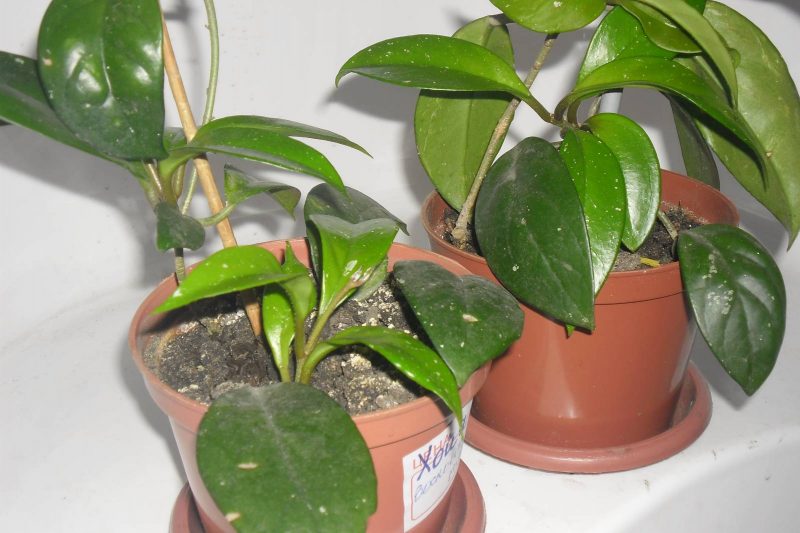
Several branches are planted in one pot so that the plant looks more decorative during flowering.
- Two cut leaves are cut off from cut cuttings.
- Rinse under running water to rinse out the sticky juice.
- Dip into Kornevin powder.
- Then they are planted in perlite or vermiculite - a moisture-absorbing substrate in which cuttings quickly let out roots.
- After planting, they arrange a mini-greenhouse, covering a flower pot with seedlings with a plastic bag. They put in a bright and warm place.
The first roots will appear within two or three weeks. If you plant the plant in a transparent plastic cup, it will be visible. The rooted hoya is transplanted into a small pot.
Plant diseases and pests
Hoya flower loves moisture, but with poor drainage in the pot and strong watering, the root system can rot. If the plant is not transplanted in time to another container and fresh soil, it will die.
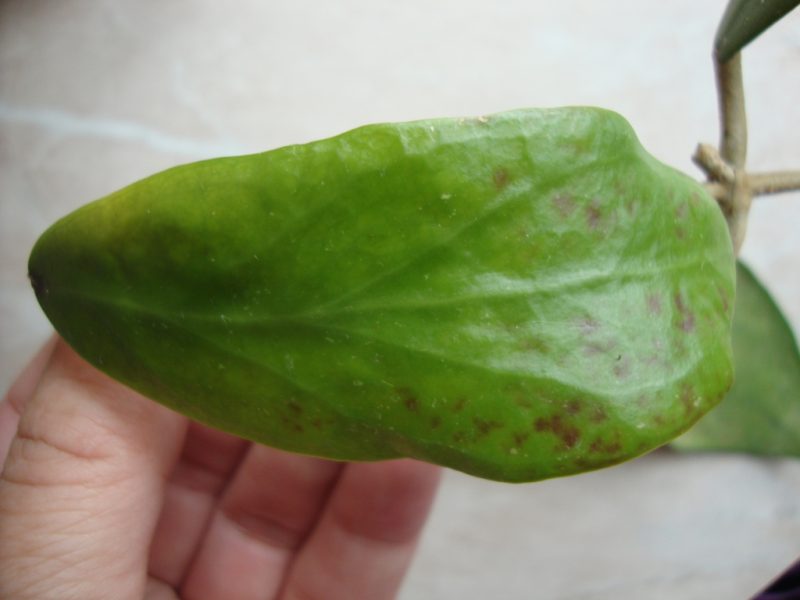
Hoya suffer from insect pests:
- scale insects;
- whiteflies;
- mealybug;
- aphids.
If the first signs of damage are detected, the plant is treated with an insecticide. If a spider mite has settled on the leaves, processing with acaricide or garlic infusion will help.
Why does the hoya not bloom, the leaves turn yellow?
With improper cultivation of hoya, difficulties may arise - the leaves will turn yellow, curl and fall off.
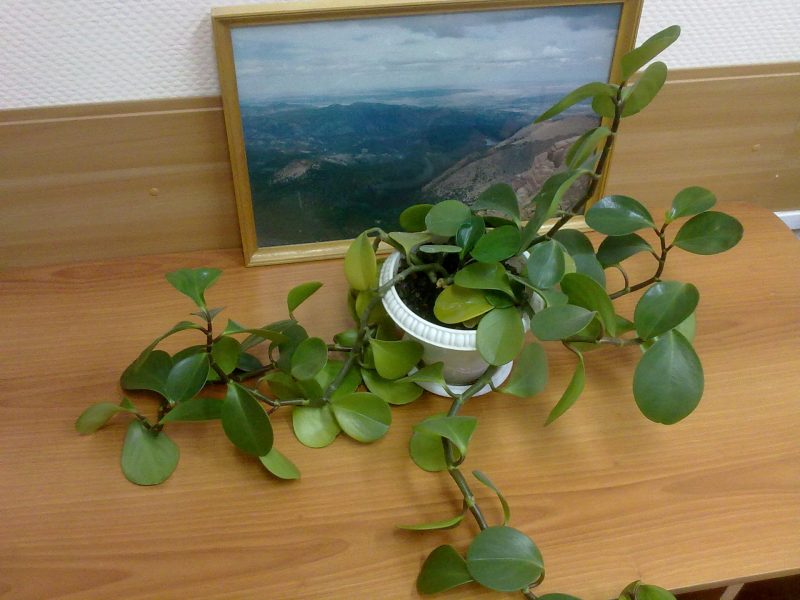
There are several reasons for this:
- cold air in the room;
- excess sun;
- lack of moisture or excessive watering;
- dry air environment;
- poor drainage;
- cold water for irrigation;
- lack of nitrogen in the soil.
Some flower growers place a pot of hoya several times in spring or early summer in warm water with a temperature of 30–35 ° C and water it with warm water 2 or 3 times a week several times in spring or early summer.
For flowering, a plant needs such conditions:
- good lighting;
- age 2-3 years;
- cramped pot;
- shoots not less than 30 cm long;
- fertilizing with phosphorus fertilizers.
In winter, watering is reduced and the hoya is kept in a bright place with a temperature of 15 ° C. It blooms on old peduncles, so they can not be cut off. When the plant blooms, they stop fertilizing it and try not to turn the pot so that the buds do not fall.












